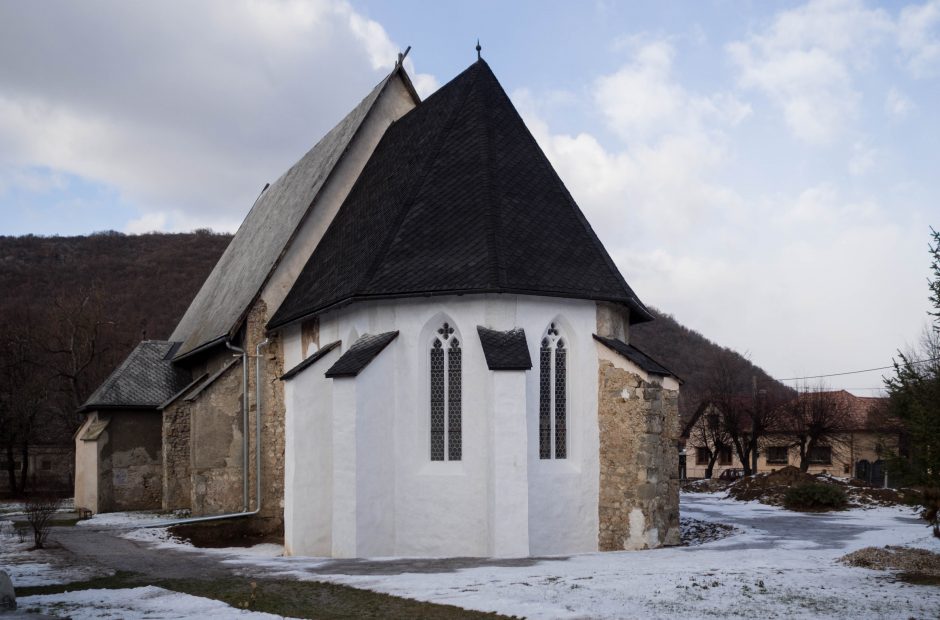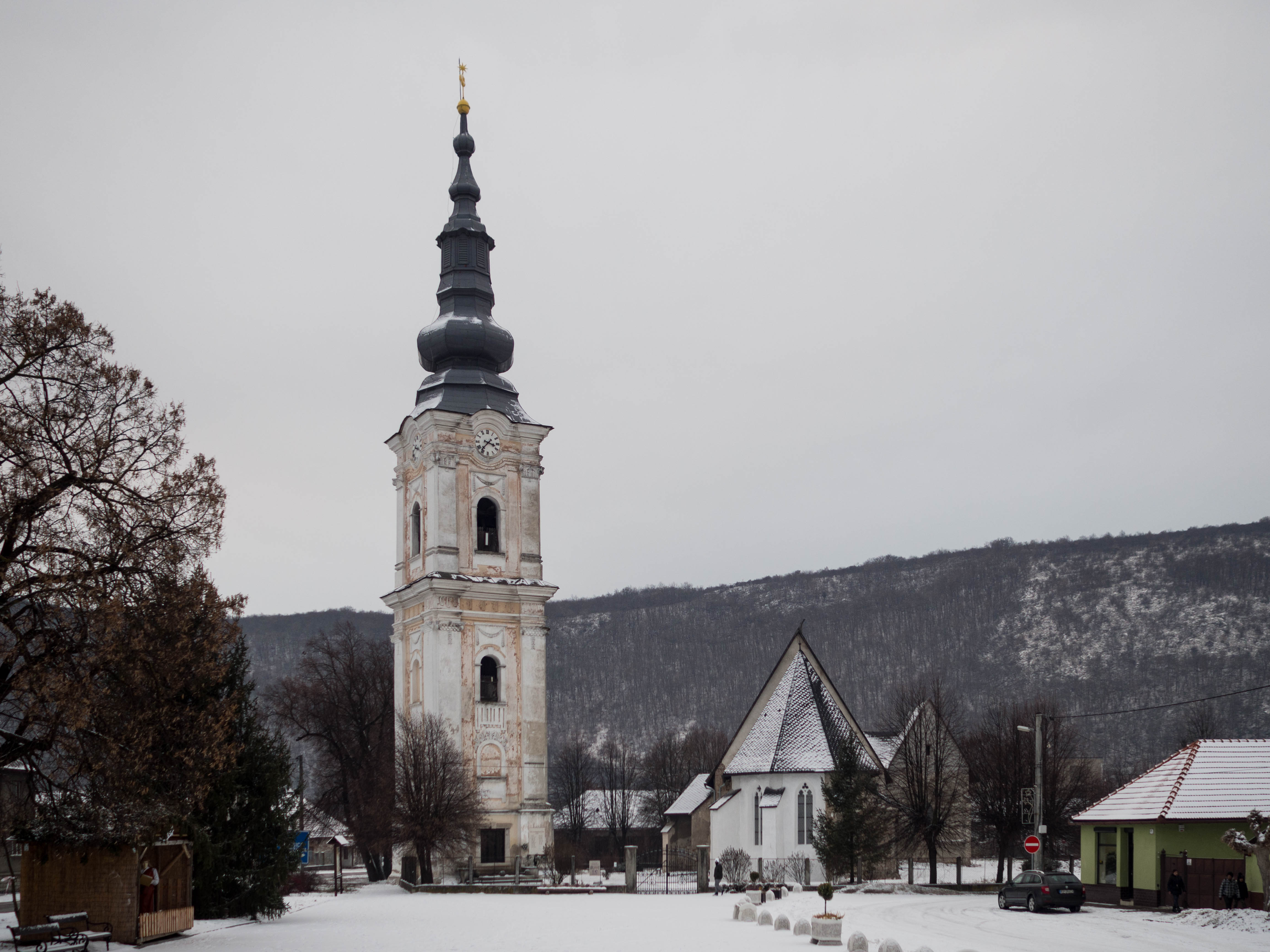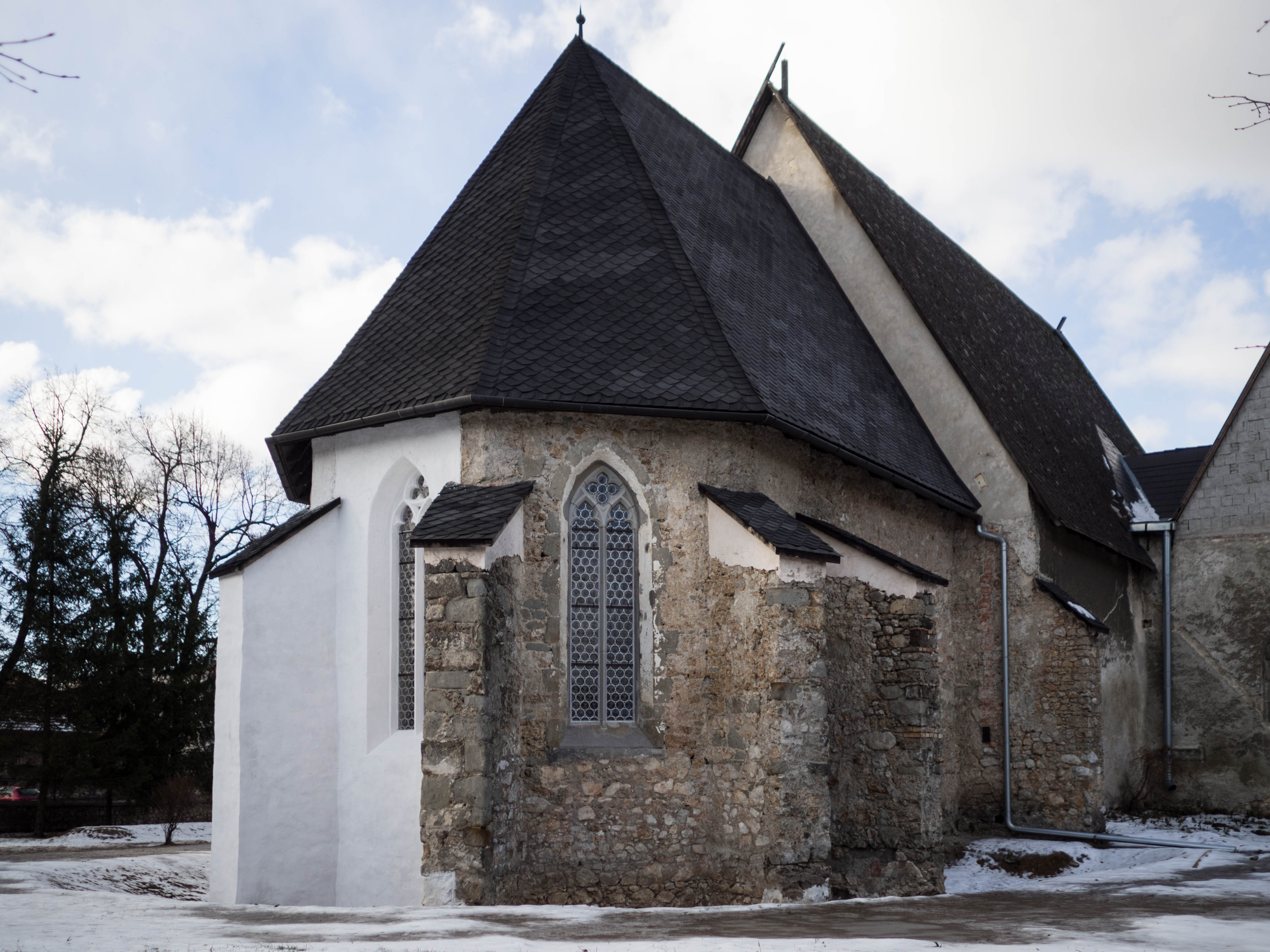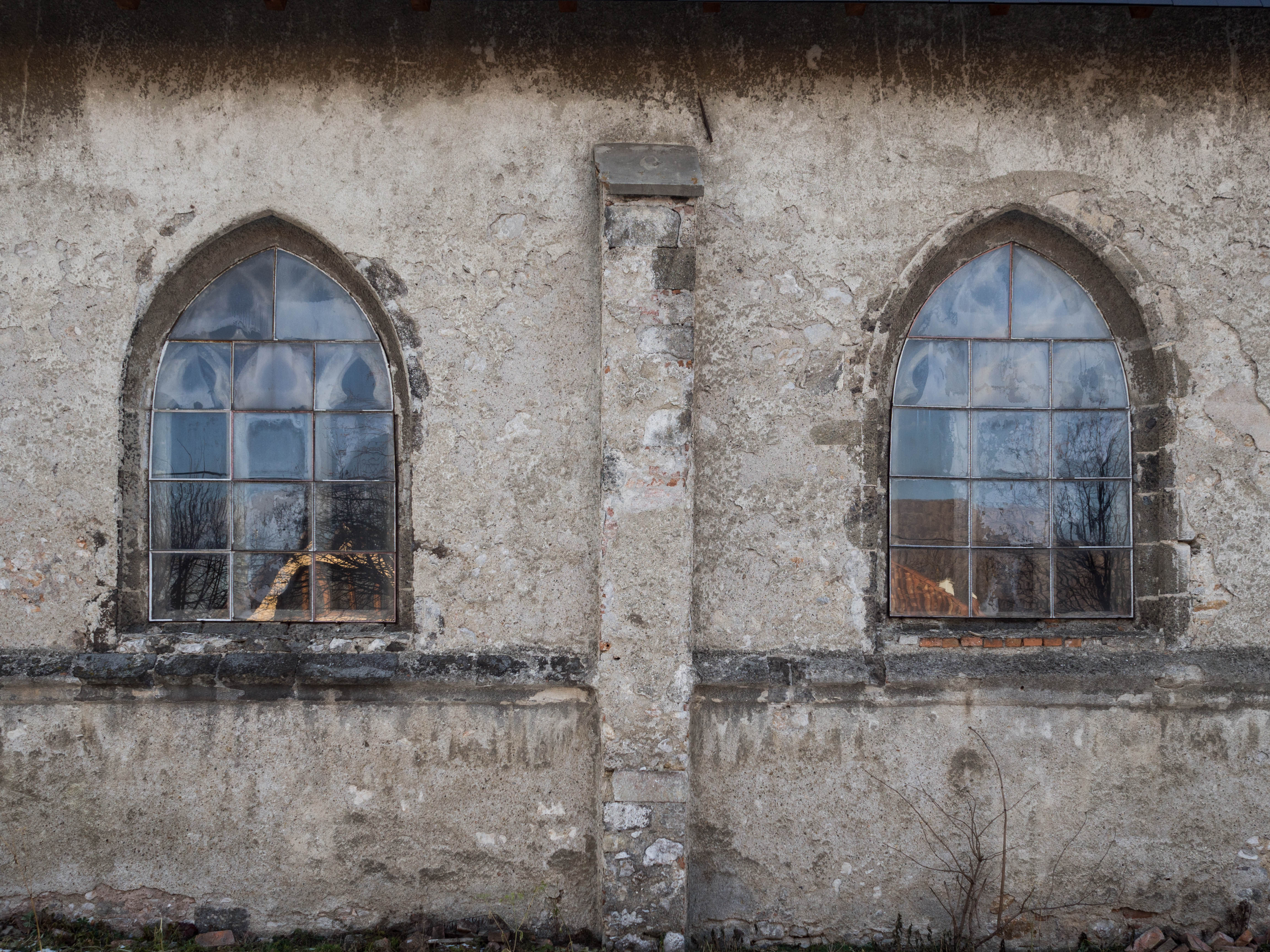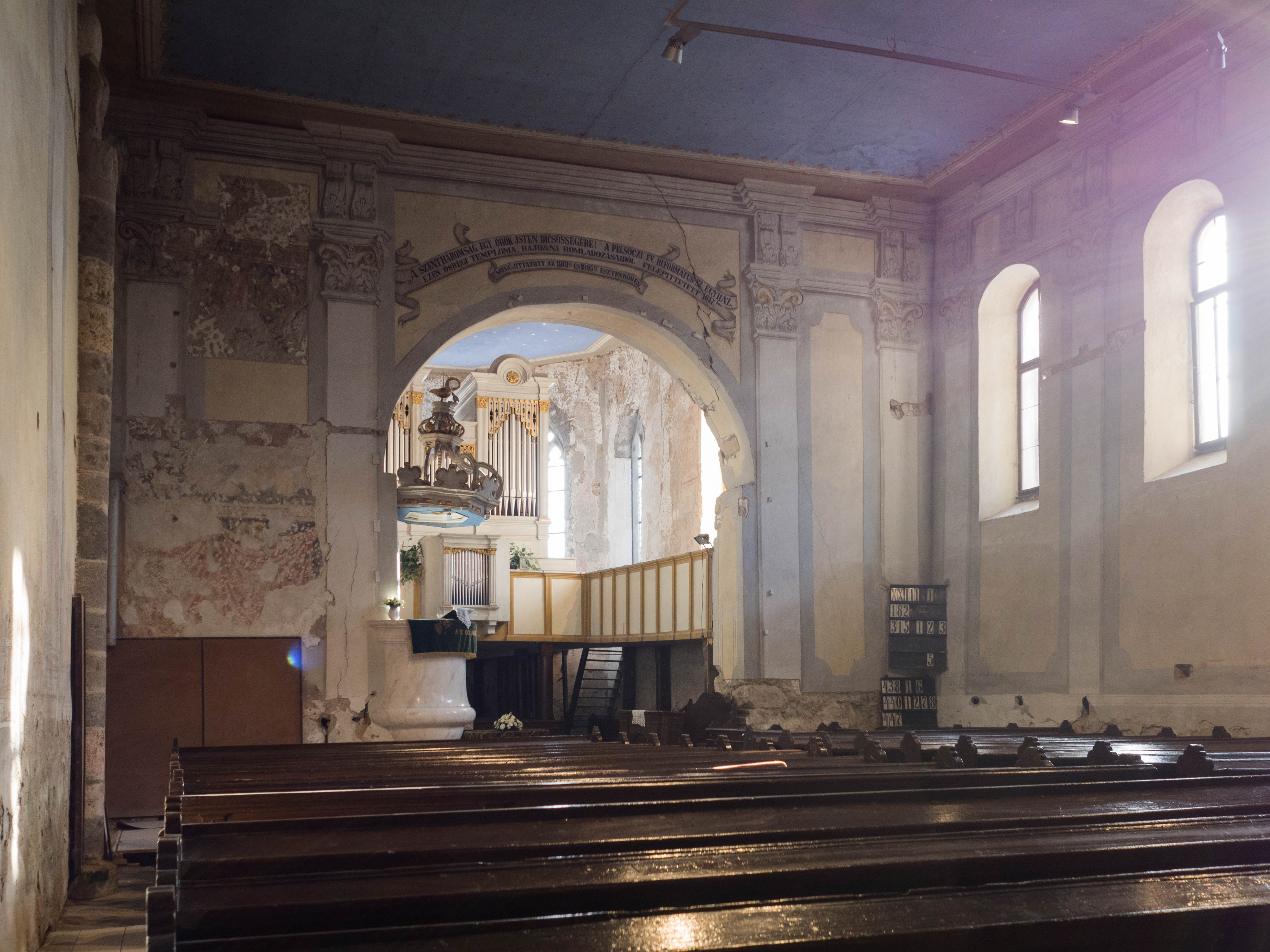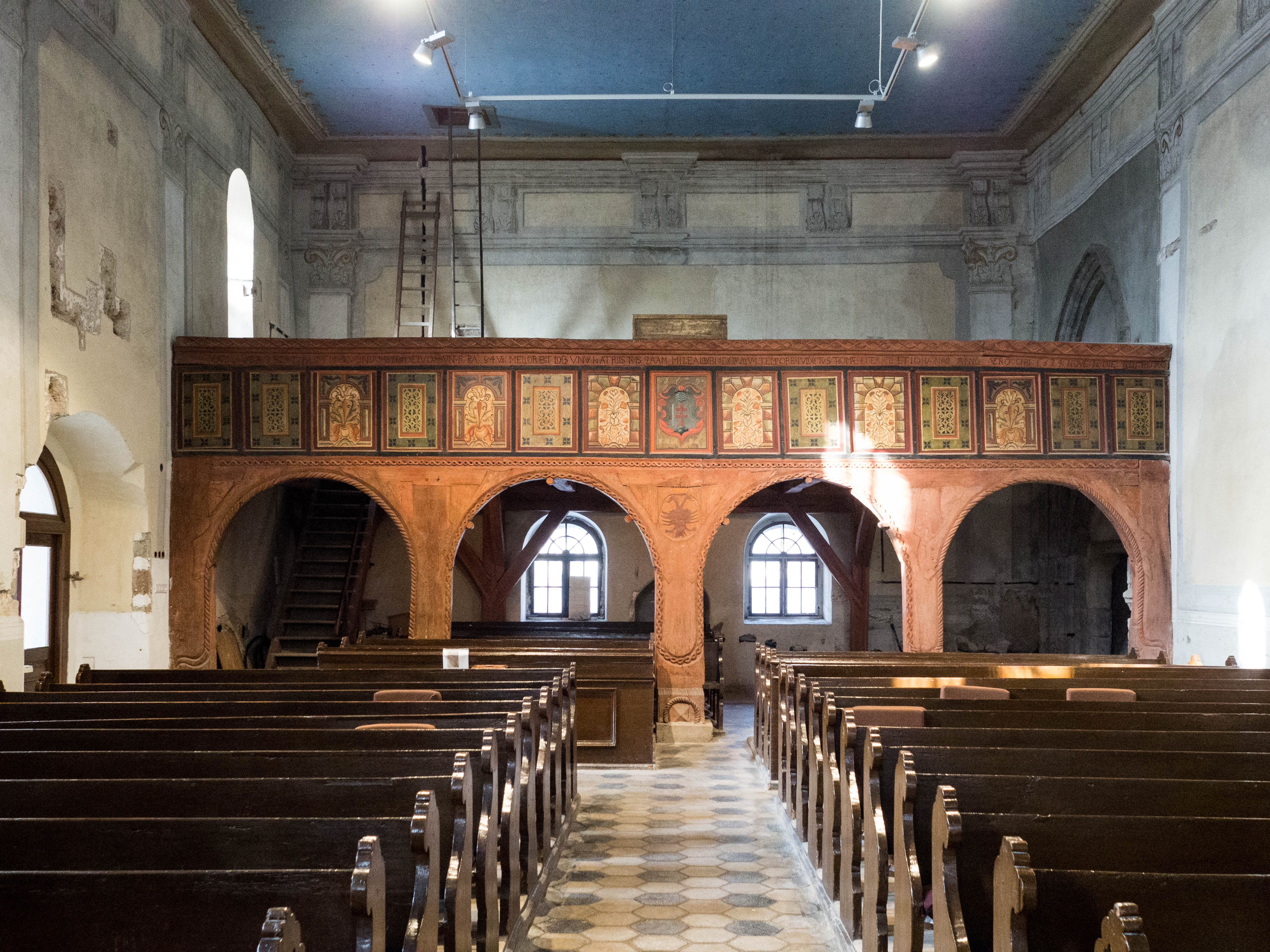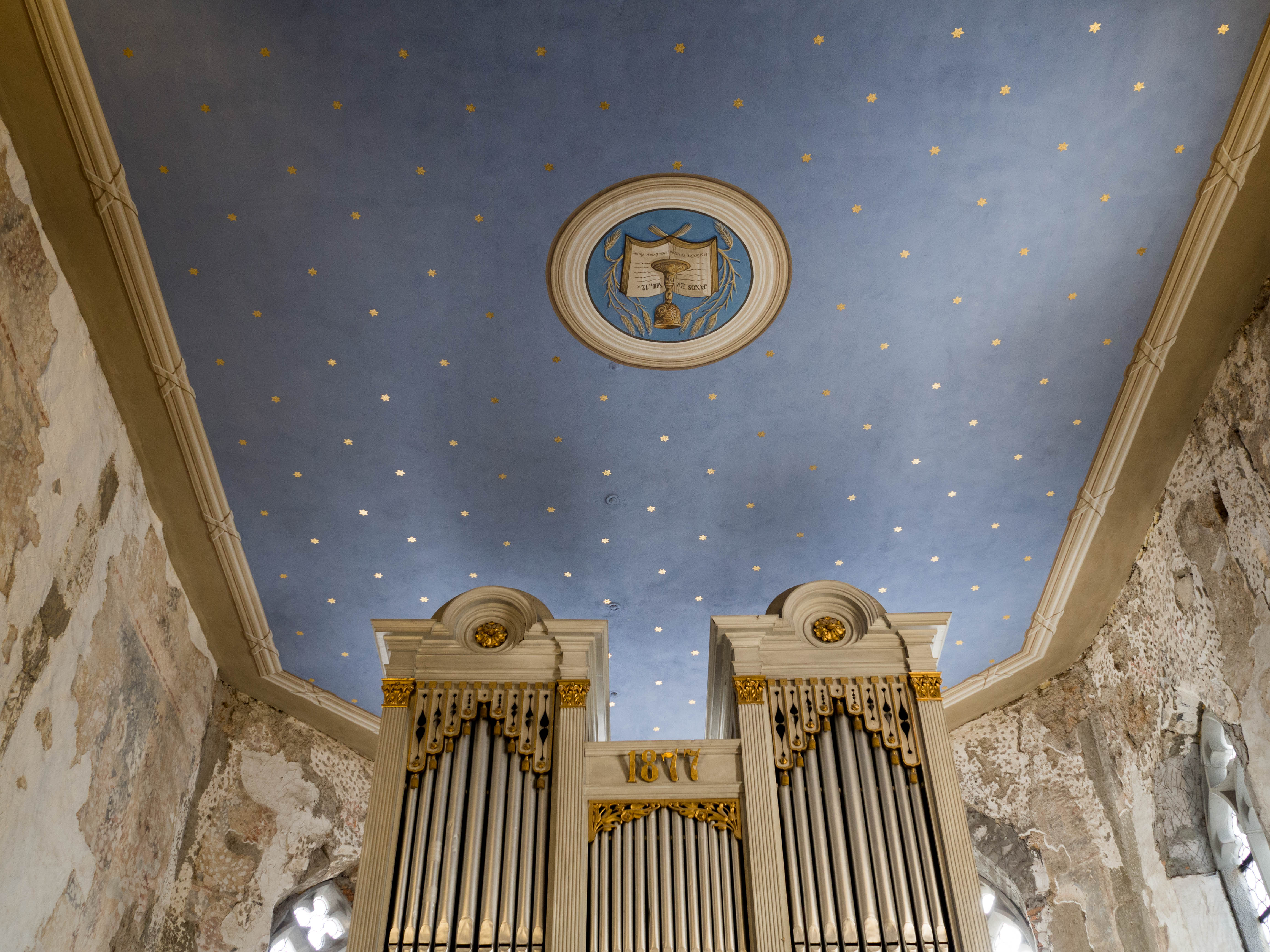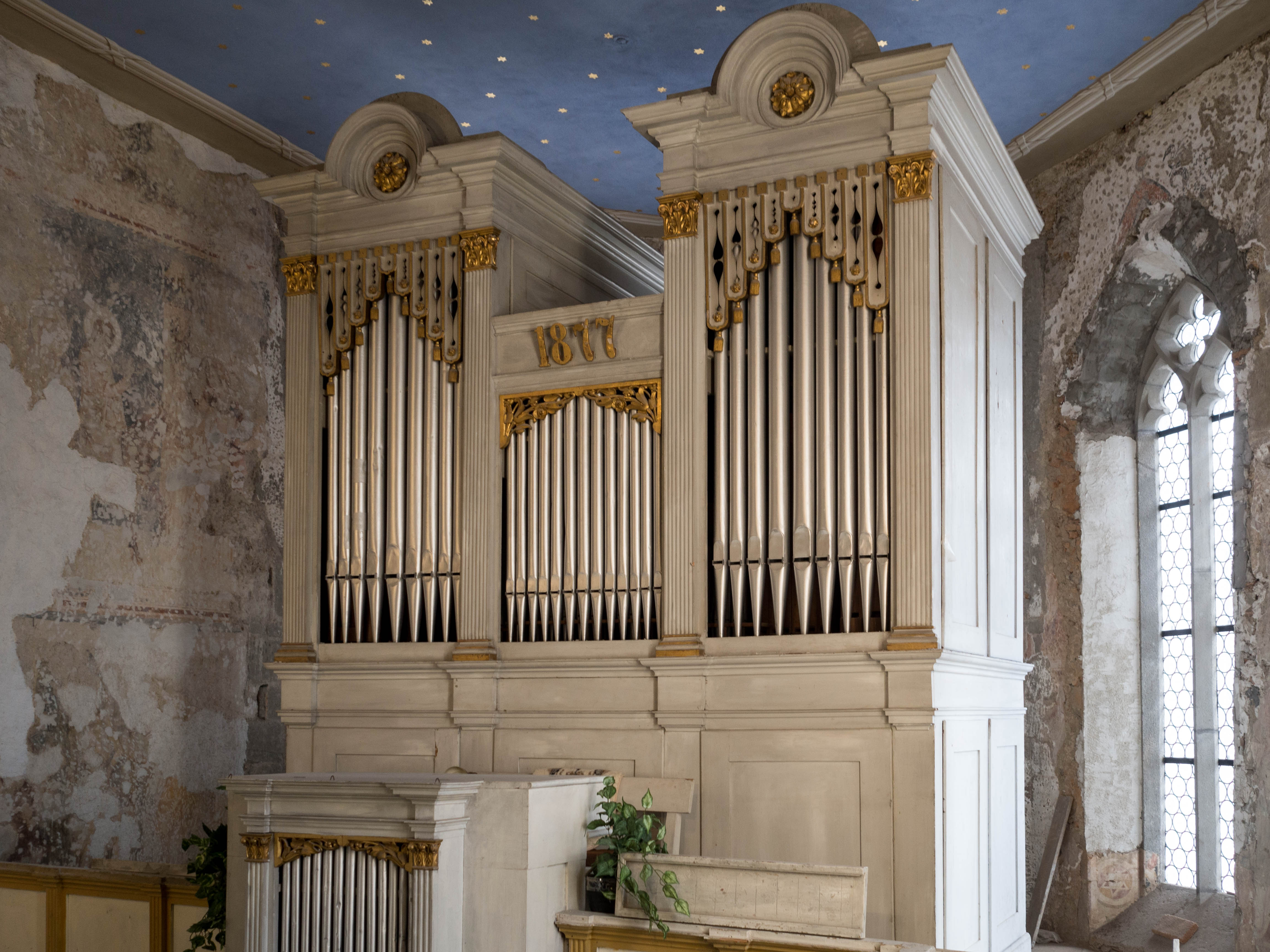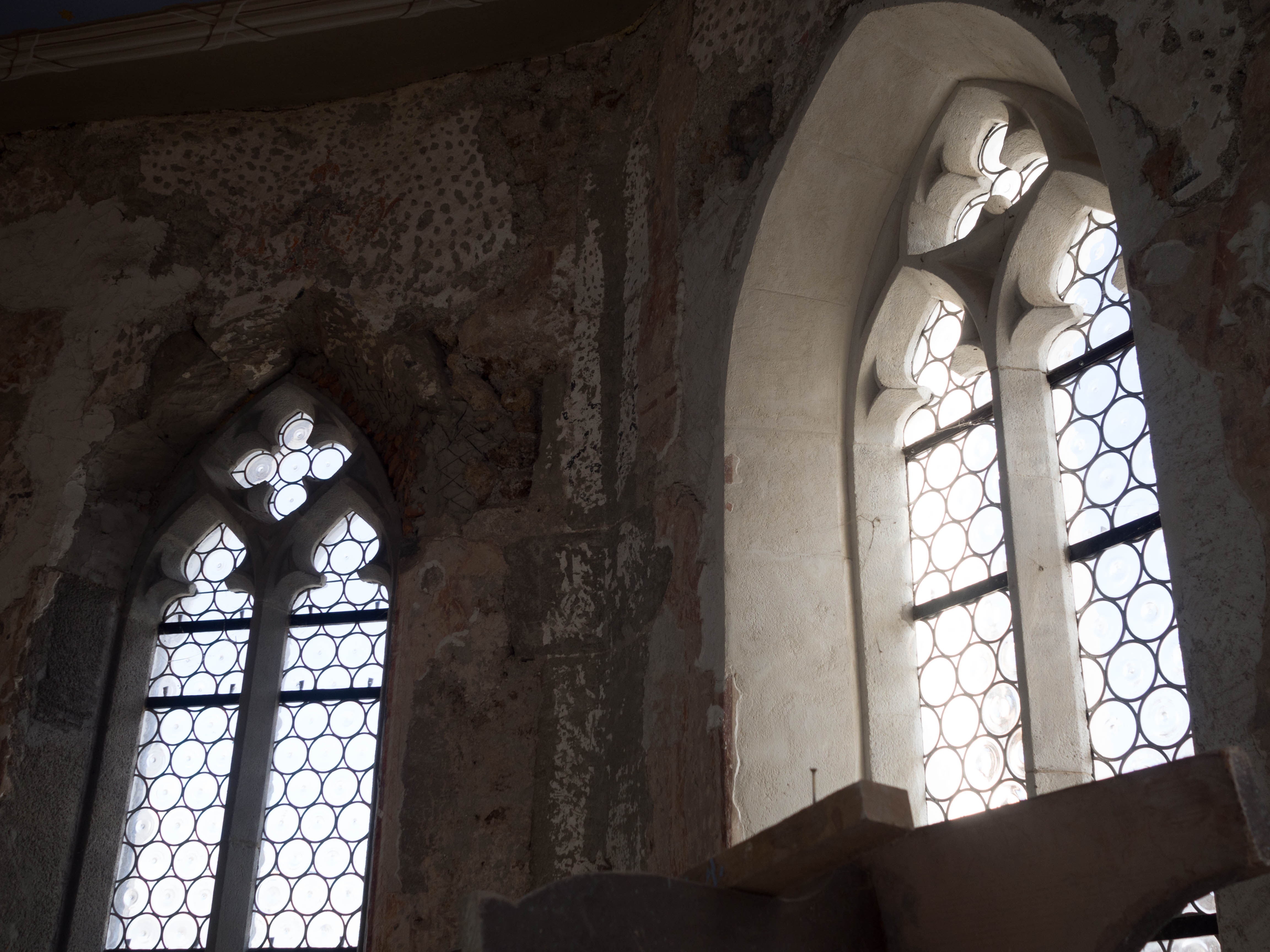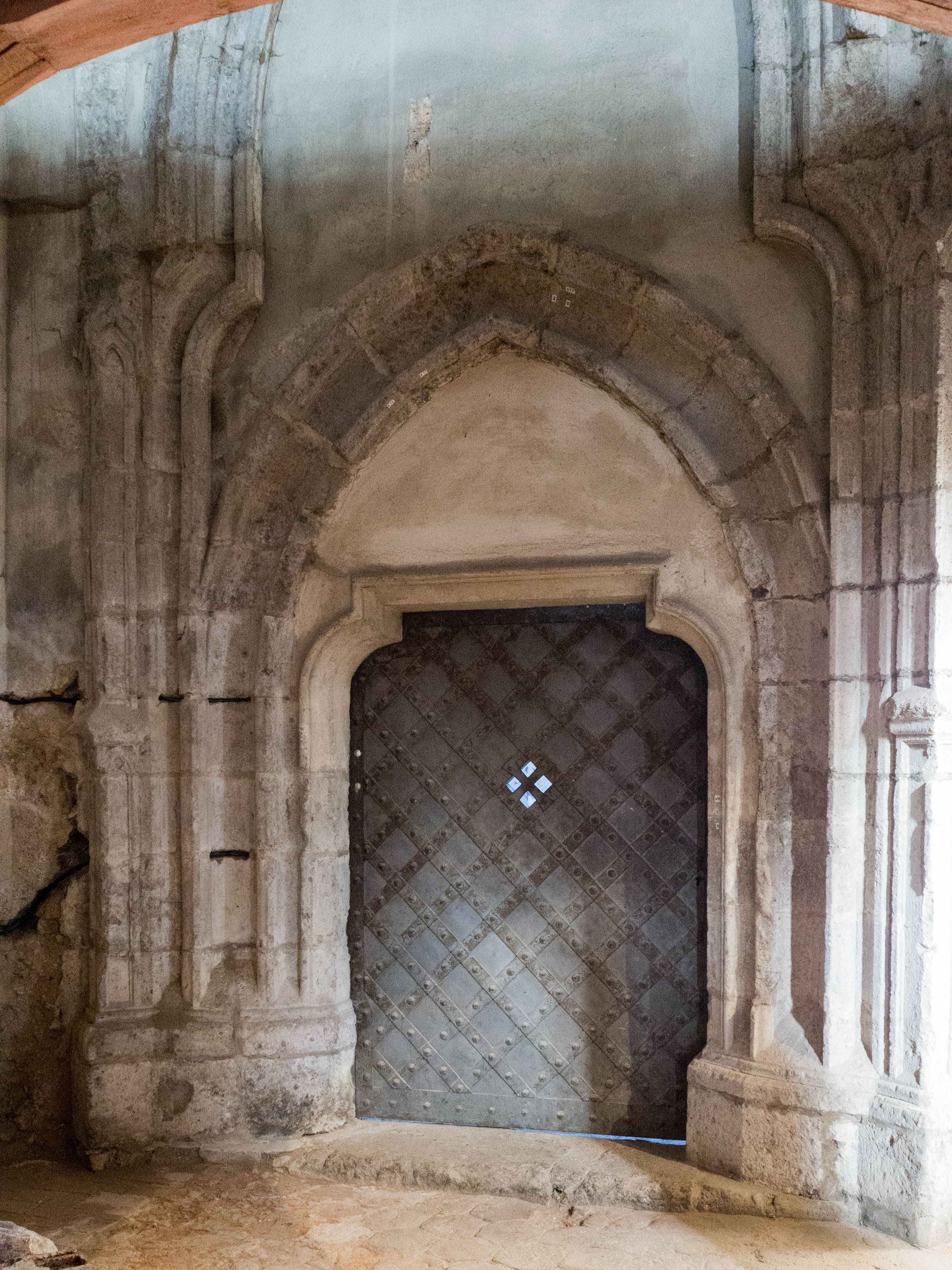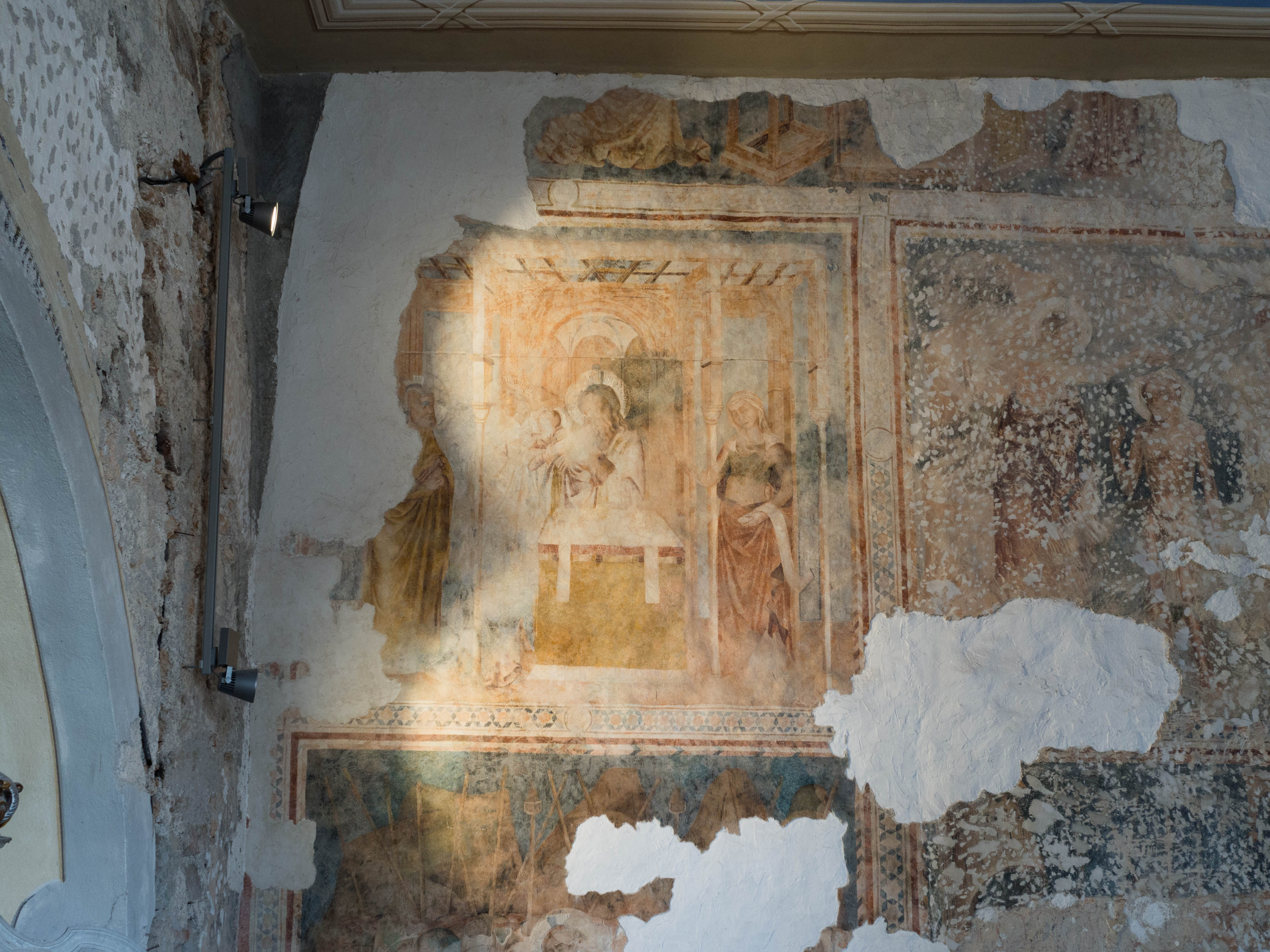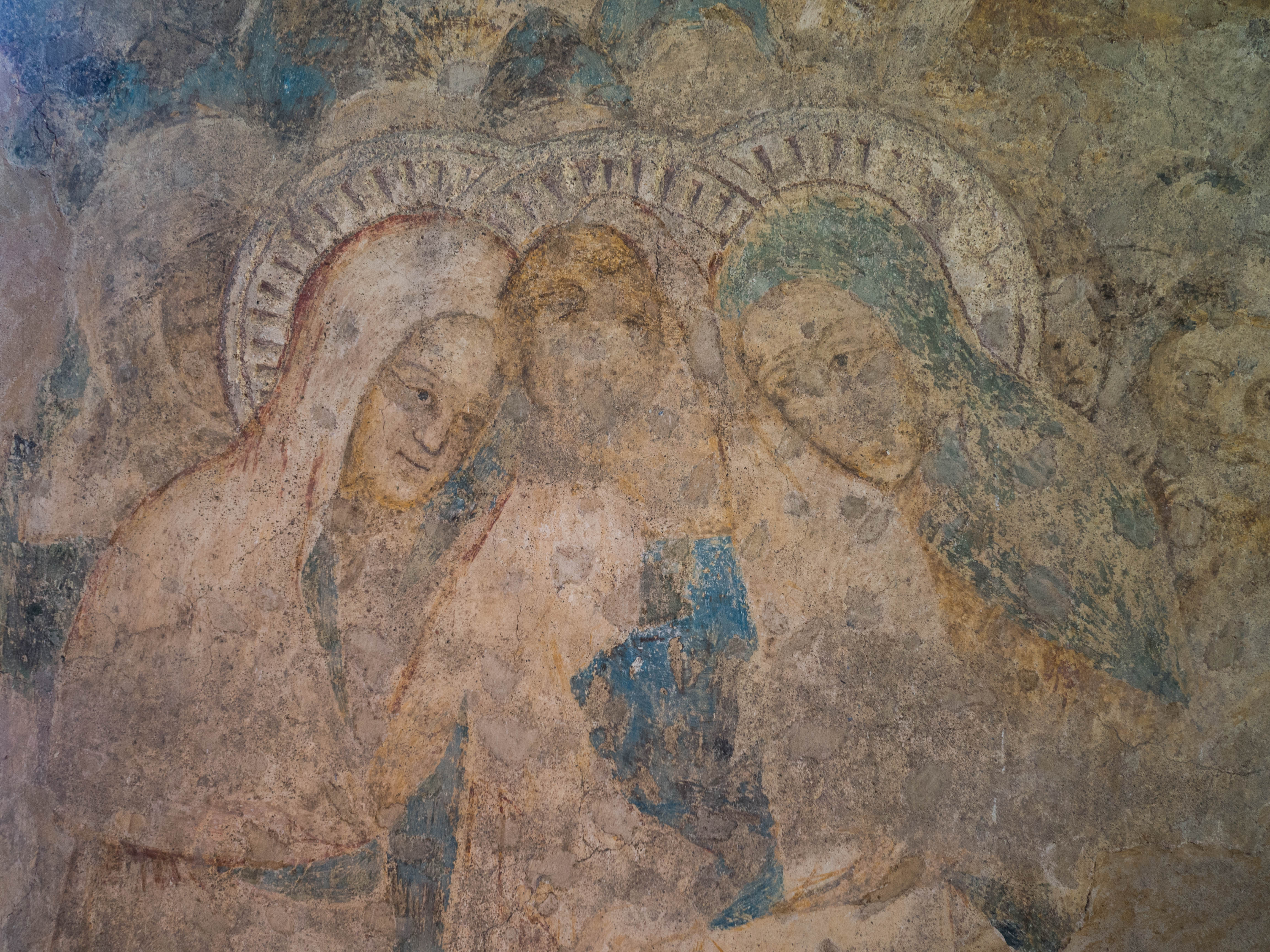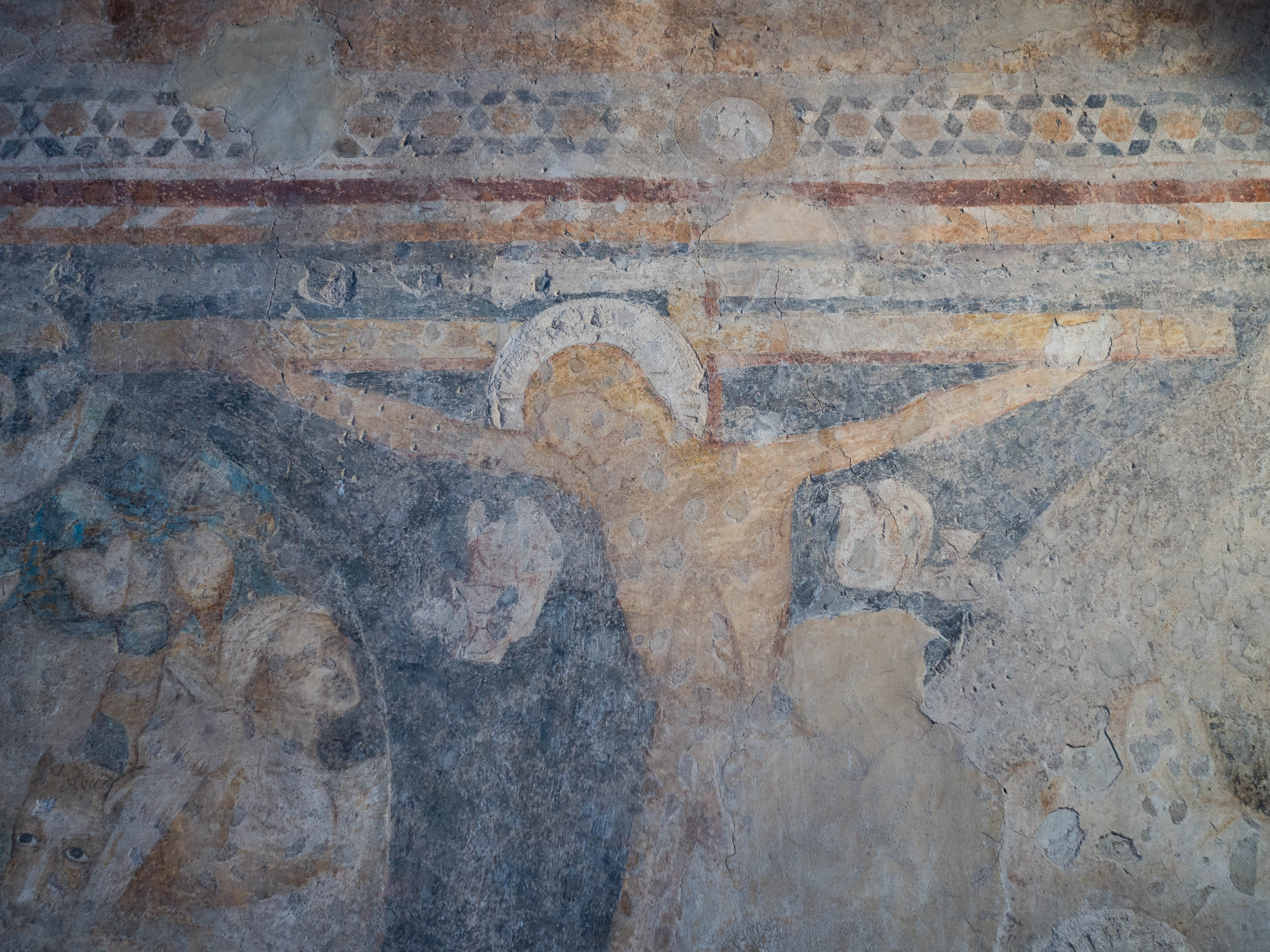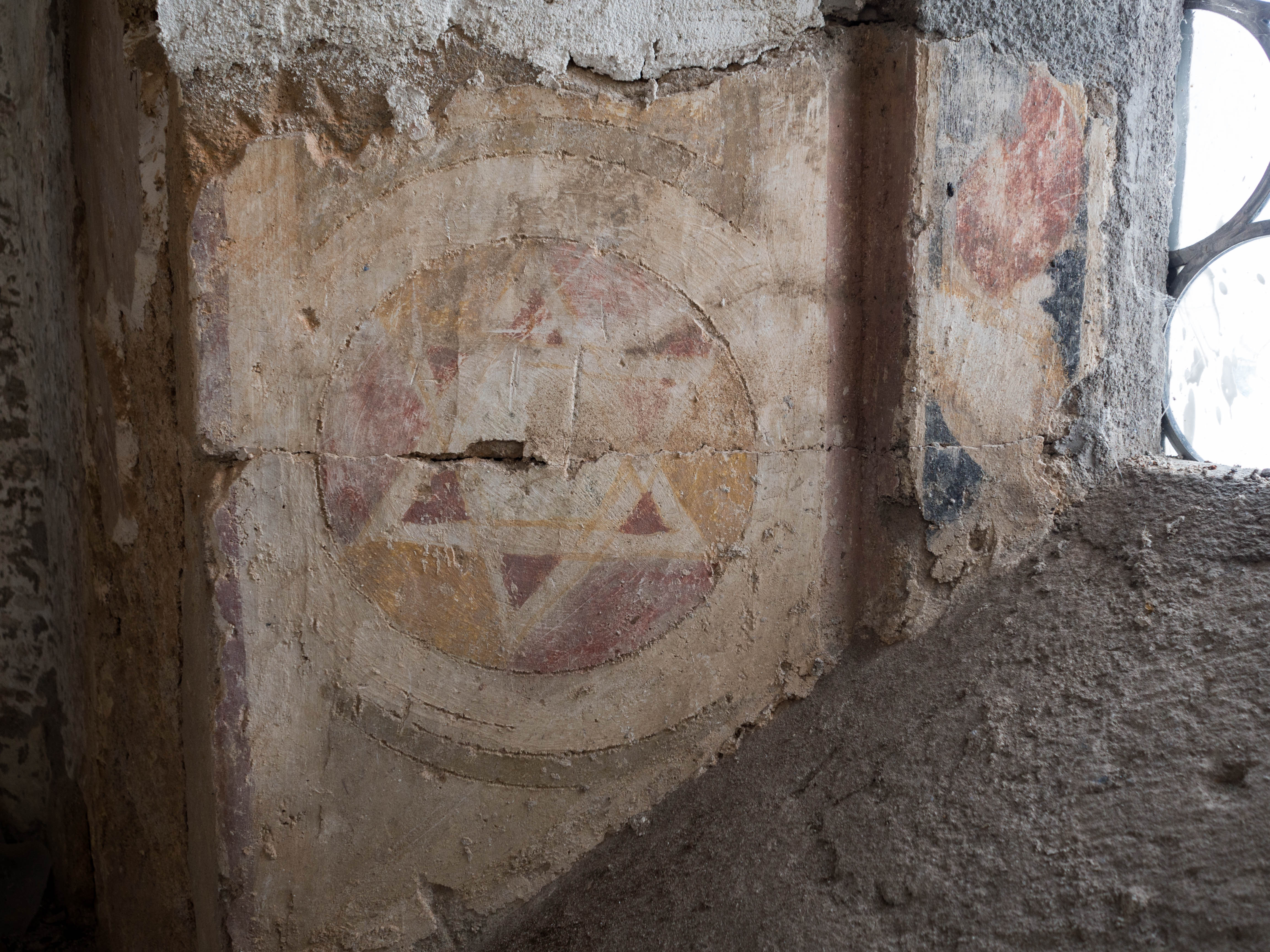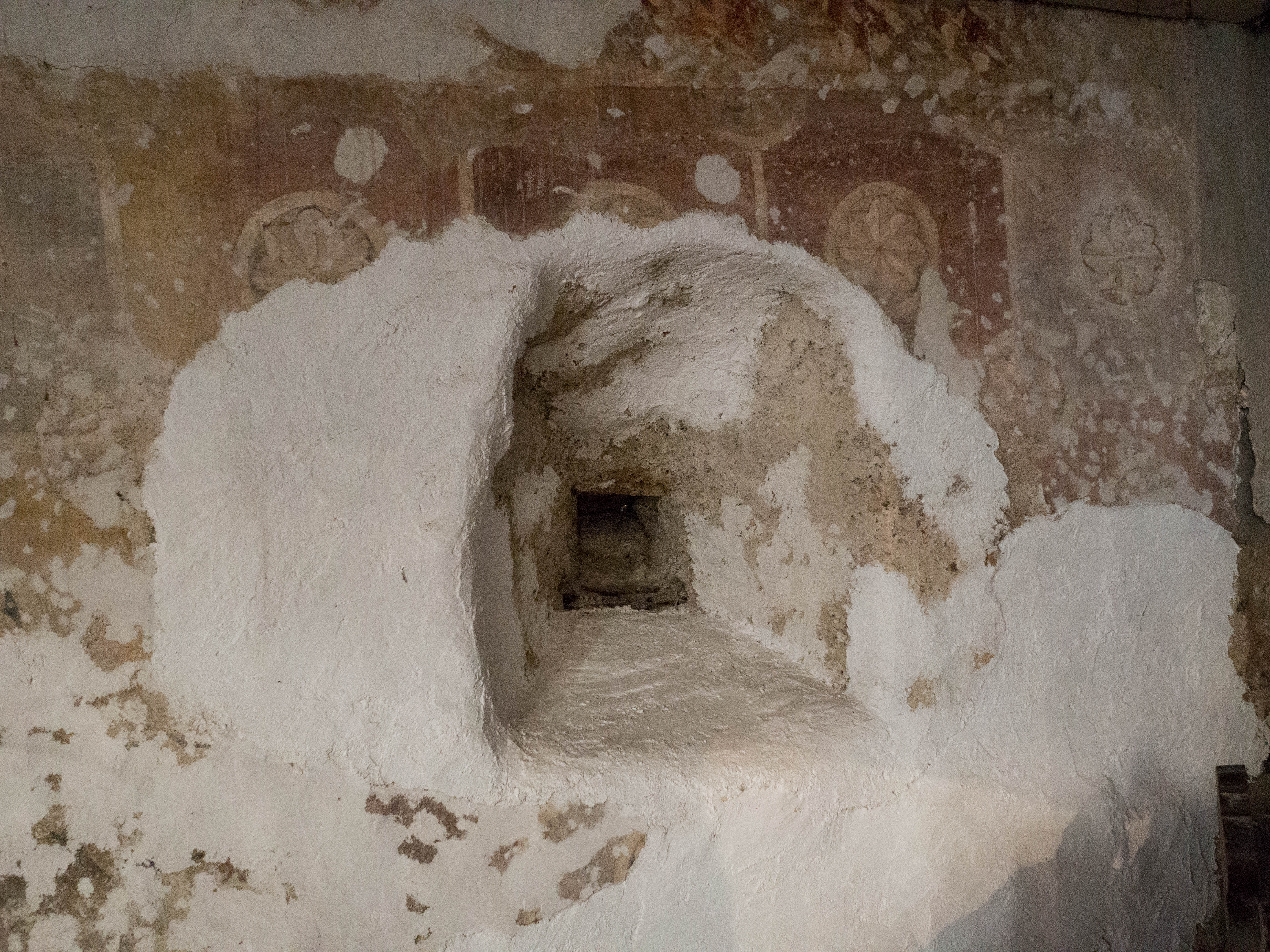Plešivec is an ancient seat of the Bubek family. The Ákoš family, the ancestors of the Bubeks, received it from King Belo IV. in 1243, after the battle on the Slaná River, where the ancestor of the Bubeks, Detrik, allegedly saved the king’s life. After stabilizing his position in 1320, Dominik Bubek built a water castle in Plešivec. In its vicinity, he built a monumental church, which also served as a burial place for the representatives of the family. It was constructed on the site of an older church built by his ancestors. The church, originally nearly twice as long as it is now, was a two-nave Gothic building with a polygonal ending of the chancel, originally vaulted on the central pillars.
From 1349, we have a record of the request of Juraj Bubek to the Pope for the possibility of collecting the indulgences to finance its construction. In the middle of the 14th century, the interior of the church was completed with fresco paintings of very high quality, carried out by Italian masters. In the first quarter of the 15th century, the church was completed with the north-facing funeral chapel of the Bubeks, built according to the pattern of the Spiš funeral chapels. We enter into the chapel through an impressive portal, the architecture of which is associated with the works of the Cathedral of St. Elizabeth in Košice. In its interior, we find three three-part late Gothic windows with an original tracery in the ogive arch shape and corbels of the former vaults.
In 1558, at the time of the Turkish threat, the church was severely damaged, the vault collapsed and the building remained as a ruin until its reconstruction in 1617. By that time, the church was taken over by the reformed believers who reduced its layout to its current length of 19 meters; they covered the nave with a flat ceiling and closed the entrance to the unused chapel. At that stage, the entrance to the church was established from the south and three window openings were made on the south wall. From that period comes a valuable matroneum with painted decorations from 1627. In 1807, a bell-tower was built, a beautiful example of the so-called Gemer classicism.
The first research in the church was realized in 1861 during its restoration. Under a layer of ashes, the original frescoes were discovered. At the beginning of the 20th century, an epitaph of Ladislav Bubek from 1401 was discovered under the pulpit and was placed on the chapel wall. The paintings were professionally restored in 1938, at a time when Plešivec belonged to Hungary.
A painting of the kings St. Stephen and St. Ladislaus was discovered on the exterior side of the southern wall. Further research, in 1977-1978, revealed the frescoes on the southern wall of the chancel, the fragmentarily preserved Last Supper, and the monumental Crucifixion, including two crucified thieves, with three Marys and St. John, a group of Pharisees and soldiers on horses. Since 2009, another restoration of the church has been underway.
2011-2014 revealed a Christological cycle depicting Jesus’ life, beginning with the Scene of the Annunciation on the northern wall, the Introduction in the Temple, the Baptism of Christ, the Coming to Jerusalem, the Feet Washing, Jesus in the Garden of Gethsemane, Jesus judged by Pilate, the Flagellation of Christ, Jesus carries his cross (northern wall), the Last Supper and the Crucifixion (southern wall). In addition, there are twenty-four saints in three rows on the sides of the windows.
The frescoes of the Pelšivec church are some of the best medieval frescoes in Slovakia. They are probably the work of at least two Italian masters, from the Padua school circle, invited by Juraj Bubek, who during the campaign with King Louis I in the struggle for Naples heritage, got to know the current Italian painting style. The painting is characterized by distinctive narrative elements, the plasticity of figures and sophisticated composition revealing the mastery of the authors based on the painting of Padua Trecento in the time of the famous Giotto.
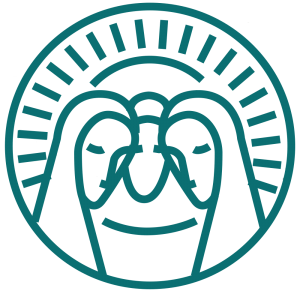 |
|
| Architecture: gothic | Construction: early 13th century |
| Church: Reformed Church | Patrocinium: originally St. George |
| Circuit: Štítnik Circuit | |
| Contact: Alžbeta Hegedüsová | |
| Phone number: +421 905 665 125 (SK/HU) |


